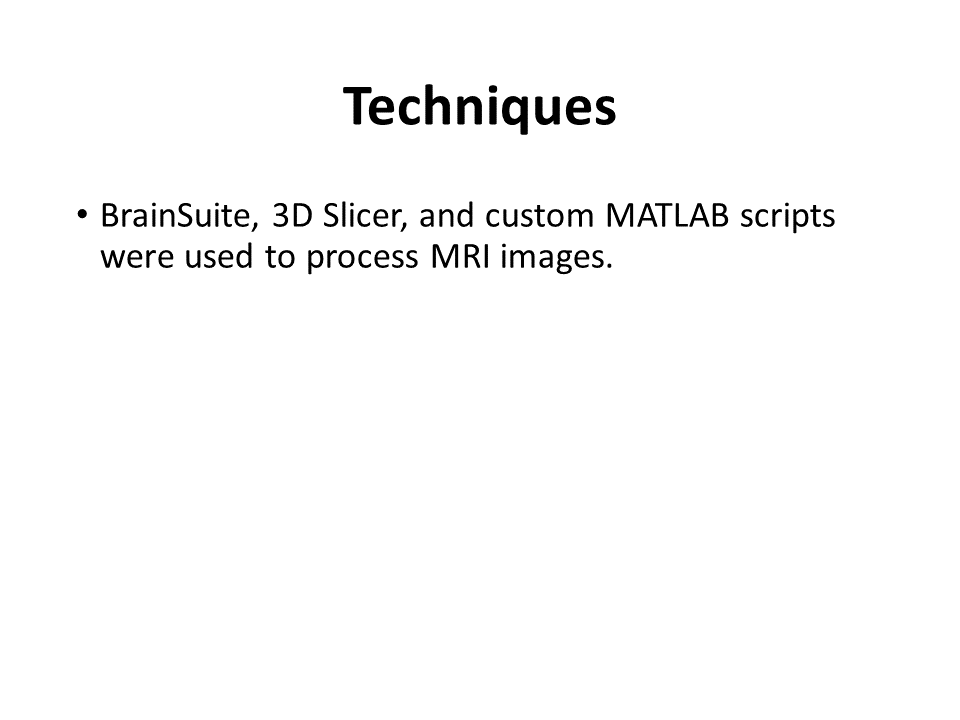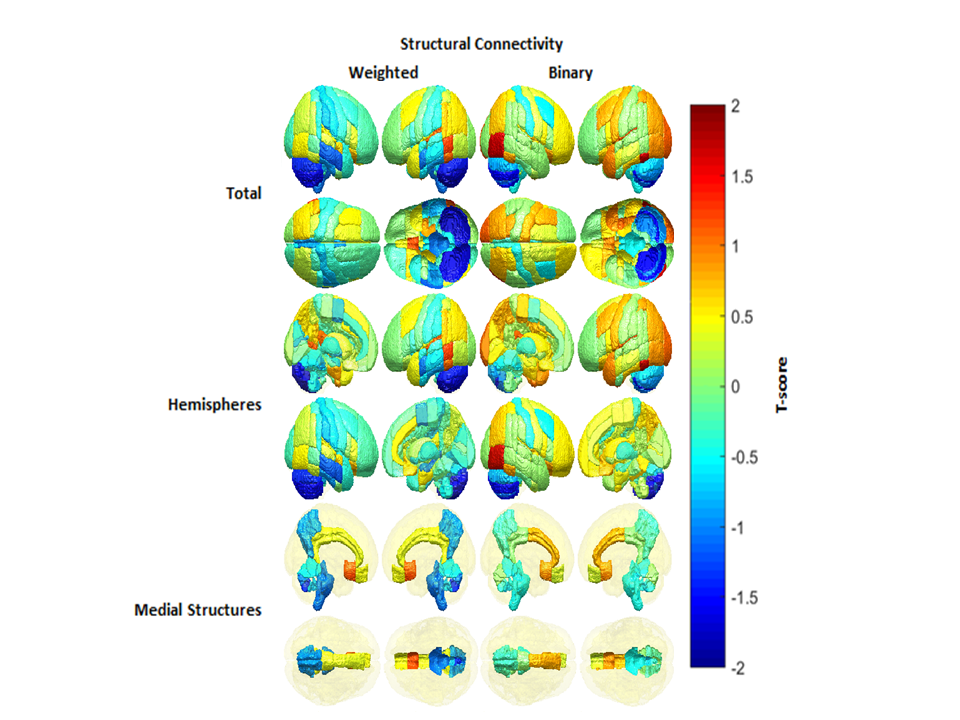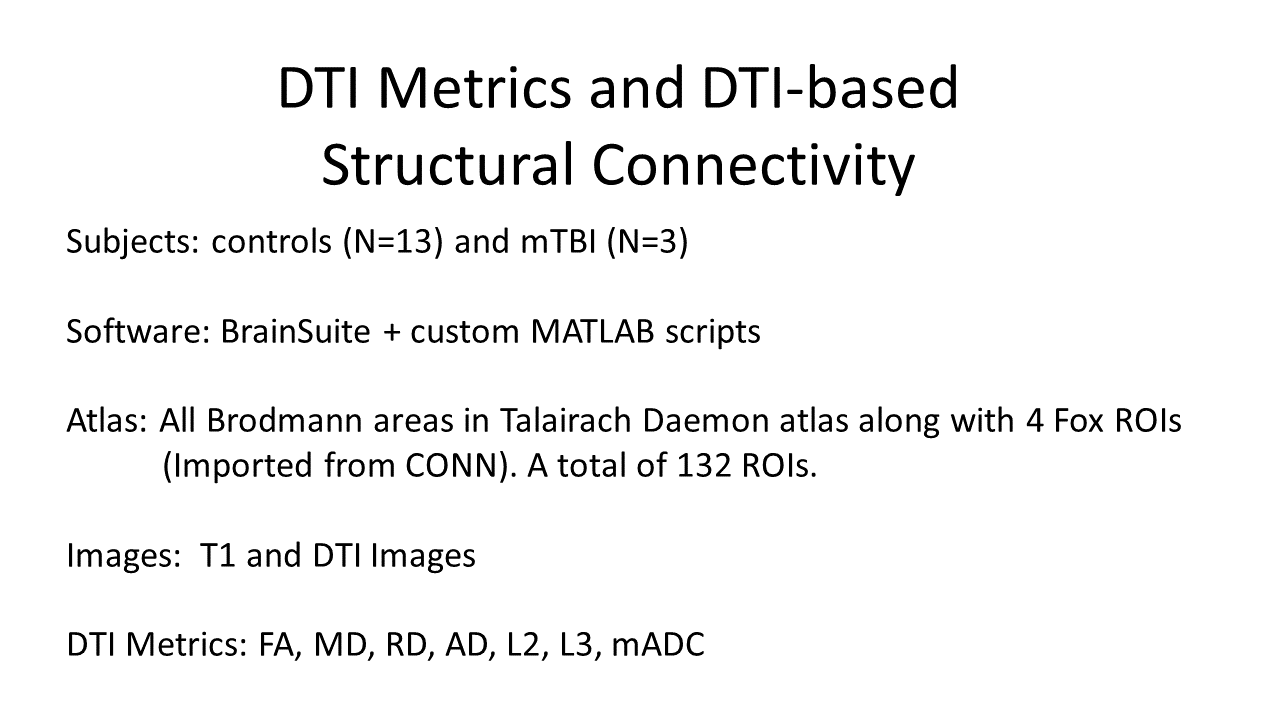Epilepsy
Author: Tina Phan
Abstract
Epilepsy is a disorder of the brain that is seen with sudden, transient seizures. Chronic seizures not only affect patients cognitively but also lead to neurobiological, psychological, and social consequences, including ataxia and memory loss. A retrospective study was done with a novel diffusion tensor imaging (DTI) analysis method to assess the effects of epilepsy on the structural connectivity of white matter tracts within 132 regions of interest. We compared normal controls (N=15) and patients with epilepsy (N=49) along diffusion tensor imaging (DTI) metrics, such as fractional anisotropy (FA) and mean diffusivity (MD). The average age for our population of patients with epilepsy is 38 ± 13 (mean ± standard deviation). We hope to establish noninvasive neuroimaging techniques that can be standardized to aid in the diagnosis of epilepsy. Our research shows that there was a significant decrease in the white matter density within the cerebellum as well as a significant increase within the temporal lobe posteriorly. In addition, there is an increase in FA in the frontal poles bilaterally with a decrease in the cerebellum as opposed to the increase in MD in the cerebellum. Our results show structural abnormalities within the brain possibly due to the repercussions of epilepsy.
Introduction
Epilepsy is a chronic disorder characterized by recurrent, unprovoked, and unpredictable seizures that can lead to various symptoms, such as loss of consciousness. It is the fourth most common neurological disorder, affecting approximately 2.9 million people in 2013. Though the incidence of new onset epilepsy is higher in early childhood and older adults over the age of 75 years old, it can affect people of all ages, and in the United States, 10% of the population or 1 in 26 people is predicted to experience a seizure at some point in their lives. An epileptic seizure is defined as a transient occurrence of signs and symptoms due to abnormal excessive or synchronous neuronal activity in the brain. A seizure can be caused by a traumatic head injury or a stroke, but the majority of seizures have no apparent, identifiable cause, which means that they are idiopathic.
At this time, EEG testing, history of present illness (HPI), family history, and imaging like fMRI and MRI are used commonly for the diagnosis of epilepsy. However, a normal EEG and/or MRI cannot confidently exclude a patient from the conclusion of epilepsy. In fact, it can lead to misdiagnosis. Therefore, this can be a challenge for physicians as they may have to rely on the patient’s medical history, HPI, and family history for judgment of proper treatment plans. Our goal is to utilize DTI in order to standardize, and therefore, ease the diagnostic assessment of epilepsy.
DTI tractography has been shown to be a promising method in the study of neurological disorders. This method quantifies the amount of nonrandom water diffusion within tissues like the brain, which provides information to establish white matter tracts and a structural connectivity network. This, in turn, allows for assessment of white matter tract abnormalities as a result of microstructural damage from pathological processes.
































































